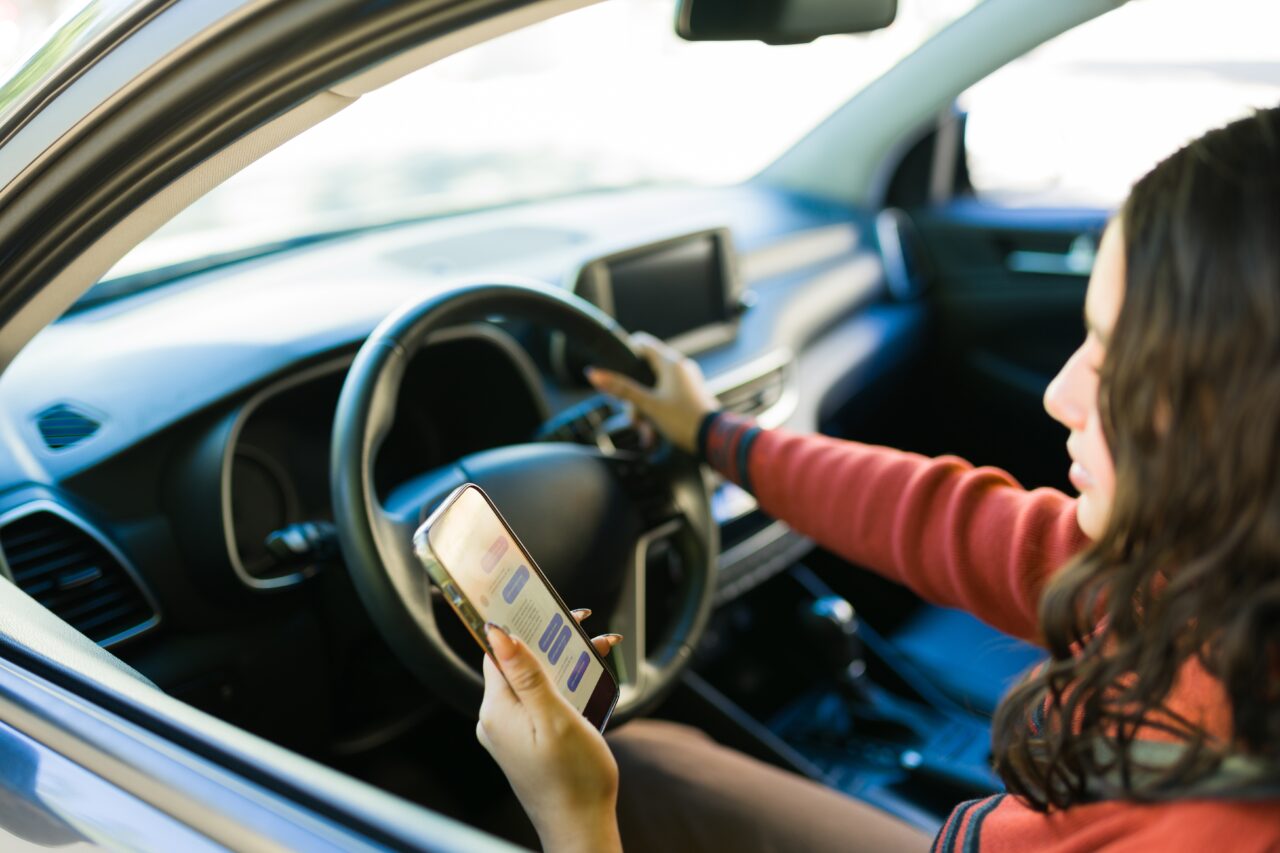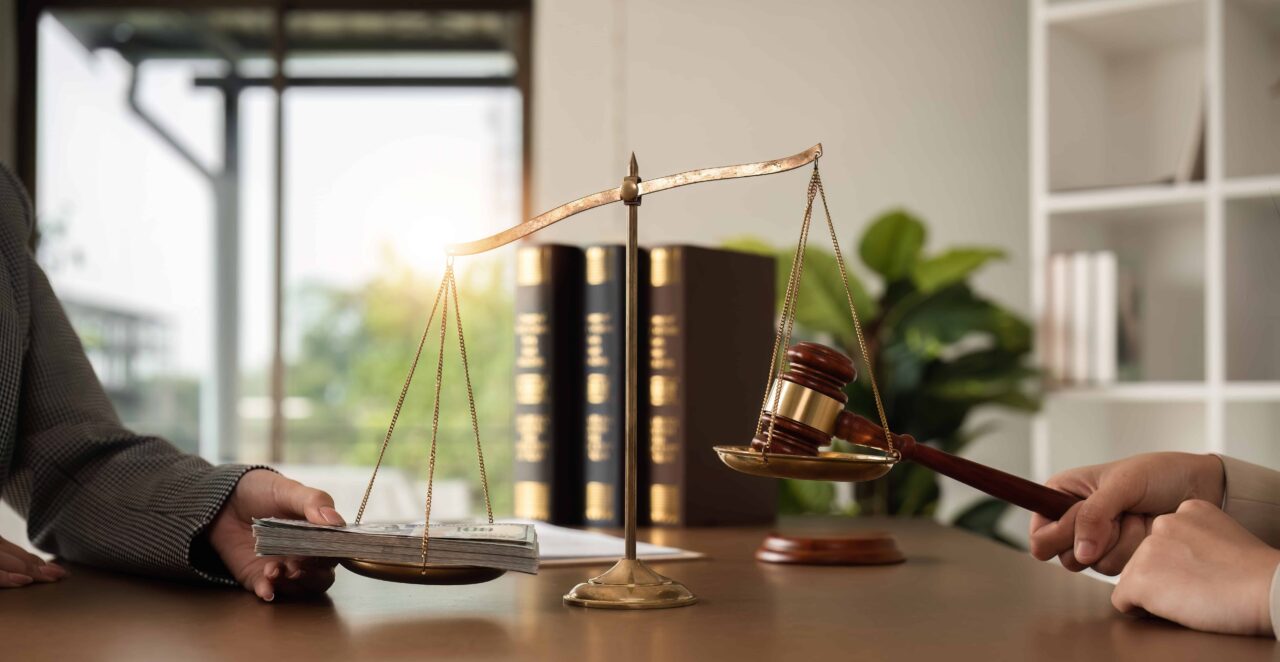The most common types of distractions while driving fall into three main categories: visual, manual, and cognitive.
- A visual distraction is anything that takes your eyes from the road, such as glancing at a GPS.
- A manual distraction is anything that takes your hands off the steering wheel, like reaching for a cup of coffee.
- And a cognitive distraction is anything that pulls your mind away from the task of driving, from a heated conversation to simply daydreaming.
After a car crash, proving the other driver was distracted is a significant challenge. Insurance companies for the at-fault party are businesses, meaning they must balance paying fair claims with remaining profitable.
They conduct thorough investigations, looking for any evidence to argue you were also at fault. This is particularly important under Texas's comparative fault rules, which could reduce or even eliminate your financial recovery.However, specific methods exist to gather evidence and establish that another's negligence caused your injuries. If you have questions about a recent accident where you believe distraction was a factor, call AP Law Group for a straightforward conversation about your situation at (713) 913-4627.
Key Takeaways for Texas Distracted Driving Claims
- Proving distraction is important for your claim's success. Texas's comparative fault rule means that without strong evidence of the other driver's negligence, an insurance company will try to blame you to reduce or deny your compensation.
- Driver distraction includes more than just texting. Any visual, manual, or cognitive activity that diverts attention from driving—even using a hands-free device—is a form of negligence if it leads to a crash.
- Evidence of distracted driving must be gathered quickly. Key proof, such as surveillance video, cell phone data, and witness testimony, disappears over time.
More Than Just Texting: The Three Categories of Driver Distraction
When we discuss distracted driving, the conversation typically centers on smartphones. While texting and driving is certainly a leading cause of accidents, the legal definition of a distraction is much broader. It includes any activity that diverts a person's attention from the primary task of safe driving.
Visual Distractions: Taking Your Eyes Off the Road
A visual distraction is anything that causes you to look away from the road ahead. According to the National Highway Traffic Safety Administration (NHTSA), sending or reading a text takes a driver's eyes off the road for an average of five seconds. At 55 miles per hour, that's like driving the entire length of a football field with your eyes closed. Even a brief glance away means you miss seeing a car stopping suddenly or a pedestrian stepping into the street.
Common Examples:
- Looking at a phone to read a text, email, or social media notification.
- Programming a destination into a GPS or navigation system while the car is moving.
- Rubbernecking, or slowing down to look at a crash on the other side of the highway.
- Turning to look at passengers in the back seat, especially children or pets.
Manual Distractions: Taking Your Hands Off the Wheel
Manual distractions involve taking one or both hands off the steering wheel to do something else. A driver with only one hand on the wheel has less control to react to sudden hazards, such as a tire blowout or another car swerving into their lane. Proper control requires two hands on the wheel to maintain stability and make quick, evasive maneuvers when necessary.
Common Examples:
- Eating, drinking, or unwrapping food.
- Smoking, lighting a cigarette, or using a vape pen.
- Reaching into the backseat or across the passenger seat for a purse, wallet, or fallen object.
- Applying makeup, shaving, or other personal grooming tasks.
- Attempting to comfort a child or restrain a pet while the vehicle is in motion.
Cognitive Distractions: Taking Your Mind Off Driving
This is perhaps the most deceptive and underestimated form of distraction. A driver is looking directly at the road with both hands on the wheel but not truly seeing what is in front of them. This phenomenon is sometimes called inattention blindness. When the brain is focused on another task, it fails to process clear visual information, such as a changing traffic light or brake lights ahead.
Common Examples:
- Engaging in a stressful, emotional, or complex conversation with a passenger.
- Talking on a cell phone, even when using a hands-free device.
- Daydreaming or being lost in thought about work, family, or personal problems.
- Experiencing road rage or becoming mentally preoccupied with the actions of another driver.
How Do You Prove the Other Driver Was Distracted?

The biggest worry for many people in your situation is turning a strong suspicion into solid proof. You may have seen the other driver looking down at their phone just before the collision, but how do you demonstrate that to an insurance adjuster or, if necessary, a jury?
The other driver will almost certainly deny being distracted. Without concrete evidence, it becomes a he said, she said scenario. Our firm handles this entire process, which frequently involves these key steps:
- Securing Cell Phone Records: We issue a legal subpoena to the at-fault driver's cell phone provider. These records provide a timestamped log of all calls, text messages, and data usage. We then synchronize this data with the exact time of the crash as listed on the official police report to show the driver was likely using their phone at the moment of impact.
- Finding Hidden Cameras: We promptly investigate the accident scene for any nearby surveillance cameras that might have captured the moments leading up to the crash. These are on traffic lights, local storefronts, or even residential doorbell cameras. This footage is typically deleted on a short loop, so acting quickly will help to preserve it.
- Interviewing Eyewitnesses: A statement from a neutral, third-party witness who saw the other driver looking down at a screen is powerful evidence. We identify and contact any witnesses listed on the police report and also canvas the area for anyone else who may have seen the driver's behavior but didn't stay to talk to the police.
- Analyzing the Police Report: We meticulously review every detail of the responding officer's report. We look for notes about the driver admitting to phone use, observations about where a phone was found inside the vehicle, or any other remarks that suggest a lack of attention.
- Using Accident Reconstruction: In more complex cases, we may collaborate with accident reconstruction specialists. These professionals analyze physical evidence like skid marks, vehicle damage patterns, and roadway debris to create a scientific model of the crash. Their findings frequently demonstrate that the collision was consistent with a delayed reaction time caused by distraction.
What Does Texas Law Say About Distracted Driving?

Texas has several laws that address distracted driving, though they don't cover every possible scenario.
The Statewide Texting Ban
Texas Transportation Code § 545.4251 makes it illegal for a driver to read, write, or send an electronic message while their vehicle is moving. Simply put, this is the statewide texting-while-driving ban. It is a primary offense, which means a police officer is allowed to pull a driver over for this violation alone; they don't need to have witnessed another traffic offense like speeding.
A first offense typically results in a fine, but if the act causes a crash resulting in serious injury or death, the driver could face a Class A misdemeanor, punishable by up to a year in jail and a $4,000 fine.
Stricter Rules for Certain Drivers & Locations
The state imposes even tougher restrictions in specific situations:
- Young Drivers: All drivers under the age of 18 are prohibited from using any type of handheld wireless communication device while driving. For new drivers with a learner's permit, this ban is in effect for the first six months of driving.
- School Zones: All drivers, regardless of age, are banned from using a handheld cell phone in an active school zone where the warning lights are flashing.
- Local Ordinances: Many Texas cities have passed their own, stricter laws. For example, Austin has a hands-free ordinance that bans holding any electronic device while driving or biking, not just texting. Knowing the specific rules of the city where the accident occurred strengthens your case.
What the Law Doesn't Cover
For drivers 18 and over, the law does not ban talking on the phone or using a GPS navigation app. However, this does not mean these actions are safe or free of legal consequences. Even if an action isn't explicitly illegal, it is still evidence of negligence.
Negligence is a legal concept that simply means a person failed to use the reasonable care that a prudent person would have in the same situation. We will argue that any form of distraction—visual, manual, or cognitive—that caused the crash was a breach of the driver's fundamental duty to keep others on the road safe.
How a Distraction Directly Impacts Your Compensation

Securing proof of distracted driving is one of the strongest factors that influences the final value of your car accident claim. As mentioned earlier, Texas follows a legal rule called proportionate responsibility (also known as modified comparative fault or the 51% bar rule).
This rule directly impacts how much compensation you receive. In Texas, the amount of money you recover is reduced by your own percentage of fault for the accident.
The insurance adjuster for the other driver is very familiar with this rule. Their investigation will look for any action on your part that is used to shift more of the blame onto you. Were you driving a few miles per hour over the speed limit? Did you signal your turn a moment too late? They will scrutinize your every move to assign you a higher percentage of fault.
By providing clear, convincing evidence that the other driver was distracted, we effectively counter these arguments. It demonstrates that the other driver's negligence was the primary cause of the collision, strengthening our negotiating position with the insurance company. This is how we pursue the maximum compensation available under the law to cover your medical bills, lost wages, and pain and suffering.
Frequently Asked Questions About Distracted Driving Claims
What if I was also distracted in some small way?
This is where Texas's comparative fault rule applies. It is not uncommon for an insurance company to allege some fault on your part. The key is determining the degree of fault for each driver. Our role is to build a case showing that the other driver's distraction was the primary and overriding cause of the accident, ensuring that no amount of blame is unjustly placed on you.
The police report doesn't mention the other driver was on their phone. Is my case over?
Not at all. A police report is just one piece of evidence, and it is just a starting point. Officers arrive on the scene after the crash has already happened and may not have personally witnessed the distraction. They report the facts as they see them at that moment.
Our own, more in-depth investigation is designed to uncover evidence, like cell phone records or surveillance video, that would not have been available to the officer at the scene.
How long do I have to file a distracted driving claim in Houston?
In Texas, the statute of limitations for most personal injury claims is generally two years from the date of the accident. While that may seem like a long time, it is always better to begin the process much sooner. Evidence, especially surveillance footage from businesses, is erased in a matter of days or weeks. Key witnesses may move or their memories may fade over time.
The other driver’s insurance adjuster is calling me. What should I say?
You are not legally obligated to provide a recorded statement to the other party's insurance company. It is generally advisable to politely decline their request and inform them that you will have a legal representative contact them. Insurance adjusters are trained professionals whose questions are designed to elicit responses that could be used to assign you partial fault for the accident.
Can a passenger cause a distraction that makes a driver negligent?
Yes. A driver must operate their vehicle safely, regardless of what passengers do. If a driver engages in a stressful or complex conversation, turns to look at a passenger, or otherwise allows a passenger's actions to take their attention from the road, the driver commits a negligent act.
The responsibility for controlling the vehicle and maintaining focus ultimately rests with the driver.
My car has a built-in infotainment screen. Is using it considered distracted driving?
Using a built-in infotainment screen constitutes a visual, manual, and cognitive distraction. While these systems are legal, a driver who causes a crash while programming a destination, changing a playlist, or otherwise interacting with the screen is still negligent.
We can use vehicle data and witness testimony to show that the driver’s focus was on the screen, not the road.
Does it matter what kind of electronic message the other driver was sending?
No. Under Texas law, the content of the message is irrelevant. The law prohibits reading, writing, or sending any electronic message while the vehicle is moving. Whether it was a text message, an email, a direct message on social media, or a response on a dating app makes no difference. The act itself is illegal and serves as powerful evidence of negligence.
Let Us Handle the Details, So You Can Focus on Healing
You should not have to build a case and fight with insurance companies while trying to recover from a serious injury. We know the roads and the challenges people face after a car accident. One phone call is all it takes to get clear answers and understand your options. If you’re ready to take the next step, our team at AP Law Group is here to help. Call us today at (713) 913-4627.